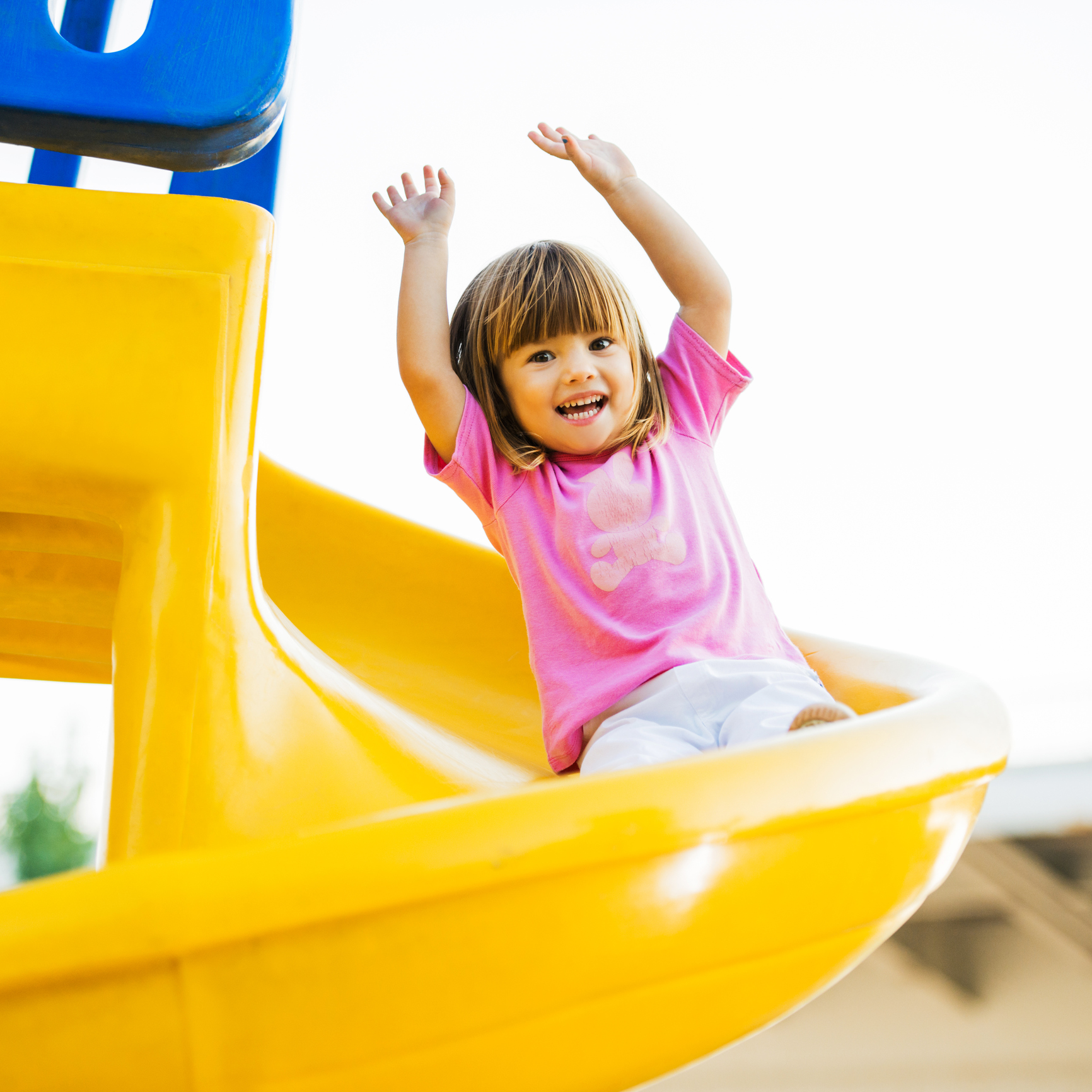Written By: Jacqueline Grimenstein, PT, C/NDT, CKTP

However, for children with motor dysfunction, the development of strength and coordination are even bigger challenges. Disturbance in the neurological system might have led to issues with timing and sequencing of the muscles turning on and off at the right time or the child might have spasticity, athetosis, or ataxia in the case of cerebral palsy. For the most part though, children learn to move in whatever patterns they can generate, often initiating with the extensor muscles and extremities; thus, developing weakness in the core muscles. This can lead to poor posture, decreased range of motion, and a reliance on the extremities for upright posture. It can contribute to poor endurance, obesity, and decreased cardiovascular function.
When these issues begin to interfere with everyday function and participation, the child might be referred to physical or occupational therapy or both. As therapists, our role is to maximize the child’s functional skills. The challenge becomes how to do this in a fun, but purposeful way. We refer to this as “play with a purpose”. Being a pediatric therapist is a rewarding, challenging, fun, but an exhaustive profession. The therapist needs to be “on” to keep the child engaged. When therapy is fun, the child wants to come back and will work to perform. It is important for the therapist to know the goal for the session and structure the activities to meet that goal. It is equally important for the therapist to communicate to the parent or caregiver which muscles or skills are being focused on so the parent understands that it is not just playing, and is able to incorporate this kind of purposeful play at home.
Check out the video below for at-home therapy practice strategies!
So now for the challenge – what type of play is fun and yet builds strength and coordination? It begins with a thorough assessment to determine the primary areas of weakness that are most impacting the child’s function. It must include activities that can be carried out in the home as we cannot make meaningful changes in one to two sessions a week with no carryover. The activities should also be age-appropriate, even if the child’s developmental age is significantly delayed. Start by finding out about the child’s interests, hobbies, favorite things, and preferred activities. For example, one can make “mountains” and slides from couch cushions, balance activities while stepping from pillow to pillow, and increase range and vestibular work while dancing or doing martial arts movements. Building obstacle courses both inside and out using ordinary items in the house is fun and can be used to vary the level of difficulty. For older children, it is still important to tap into their interests. They may shy away from structured, competitive play if they feel they cannot live up to the standard of play. If the child enjoys video games, encourage them to recreate or act out some of the actions or movements from the games. For a more structured approach, try martial arts, yoga, or Pilates. Develop challenges within the family for exercises like who can hold the plank the longest, how many sit-ups can each person do in 30 seconds. Model for parents different ways the children can watch television or play video or board games in prone, standing or sitting on stacked up pillows, to challenge the core and decrease static sitting time. Remember that families are busy so aim to keep it simple and enjoyable.
Function and participation play equally important roles in successful pediatric therapy. As a therapist, allow yourself to find your inner child to make sessions fun, but be sure to keep your assessment-based goals in the forefront of all sessions. Include the family and child in choosing your activities so they will stay motivated to follow through at home. Be sure to register for my webinar Adaptive Strengthening Activities for Children with Motor Dysfunction on April 13, 2022, to learn more about this topic and gain new insight as to how to keep pediatric therapy engaging, fun, and meaningful for children and their families.
Explore online continuing education courses from Jacqueline below:
Children with Severe Impairments
Adaptive Strengthening Activities for Children with Motor Dysfunction
Strengthening Activities for Children with Motor Dysfunction Stacey L. Carlon, Nicholas F. Taylor ,Karen J. Dodd &Nora Shields, Differences in habitual physical activity levels of young people with cerebral palsy and their typically developing peers: a systematic review. Disability Rehabilitation; 2013 Apr;35(8):647-55
Michelle Mochan, The Benefits of Teaching Yoga to Young Children with Special Needs: Developing an Appropriate Methodology Laurentian University, Canada, International Journal of Technology and Inclusive Education (IJTIE), Volume 6, Issue 2, December 2017
Schranz C, Kruse A, Belohlavek T, Steinwender G, Tilp M, Pieber T, Svehlik M. Does Home-Based Progressive Resistance or High-Intensity Circuit Training Improve Strength, Function, Activity or Participation in Children With Cerebral Palsy? Arch Phys Med Rehabil. 2018 Dec;99(12):2457-2464.e4. doi: 10.1016/j.apmr.2018.06.010. Epub 2018 Jul 4. PMID: 30473019.
Spaldiing, A, Kelly, L, Santopietro, J, Posner-Mayer, J. Kids on the Ball: Using Swiss Balls in a Complete Fitness Program, Human Kinetics Publishers, 1999